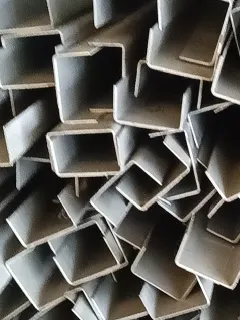loading...
- No. 9, Xingyuan South Street, Dongwaihuan Road, Zaoqiang County, Hengshui, Hebei, China
- admin@zjcomposites.com
- +86 15097380338
- Welcome to visit our website!
waste water treatment equipment
Wastewater Treatment Equipment Innovations and Importance
Wastewater treatment is a crucial process aimed at improving water quality by removing contaminants from wastewater. With growing industrial activity and urbanization, the need for efficient and effective wastewater treatment equipment has never been more significant. This article delves into the various types of wastewater treatment equipment, their functions, and the latest innovations in the field.
Types of Wastewater Treatment Equipment
1. Preliminary Treatment Equipment This includes screens and grit chambers designed to remove large solids and heavy particles from wastewater. Screening equipment helps filter out debris such as plastics, rags, and large organic materials, while grit chambers allow sand, gravel, and other heavy particles to settle.
2. Primary Treatment Equipment The primary clarifier or sedimentation tank is key during this stage. It allows wastewater to sit so that larger solids can settle to the bottom, forming sludge, while floating materials, such as oils and greases, can be skimmed off the top.
3. Secondary Treatment Equipment This phase typically involves biological processes to further reduce organic matter in the wastewater. Activated sludge systems, trickling filters, and rotating biological contactors are common methods used. These systems rely on microorganisms to break down organic pollutants, resulting in a cleaner effluent.
4. Tertiary Treatment Equipment This advanced treatment stage involves filtration, nutrient removal, and disinfection processes. Equipment such as sand filters, UV disinfection units, and reverse osmosis systems are employed to ensure that the effluent meets stringent regulatory standards before being released into the environment or reused.
5. Sludge Treatment Equipment The management of sludge generated during treatment is vital. Digesters, dewatering equipment, and incinerators are used to treat and minimize sludge volume, reducing its environmental impact. This step can also recover energy or produce biogas, contributing to a more sustainable waste management strategy.
waste water treatment equipment

Innovations in Wastewater Treatment Equipment
The landscape of wastewater treatment is constantly evolving, fueled by technological advancements and a growing emphasis on sustainability
. Innovations include- Smart Sensors and IoT Incorporating smart sensors and Internet of Things (IoT) technology allows for real-time monitoring of wastewater treatment processes, enabling operators to optimize performance and promptly address issues.
- Membrane Technology Membrane bioreactors (MBRs) and microfiltration systems offer efficient and compact solutions for treating wastewater, providing high-quality effluent with reduced footprint.
- Energy Recovery Modern treatment facilities are focusing on recovering energy from wastewater through anaerobic digestion and other methods, turning waste into a valuable resource.
- Advanced Oxidation Processes (AOPs) These processes employ powerful oxidizing agents to break down pollutants that are resistant to conventional treatments. AOPs are gaining prominence for treating industrial wastewater laden with toxic chemicals.
Conclusion
The importance of effective wastewater treatment equipment cannot be overstated. As global water scarcity and pollution concerns rise, the need for efficient treatment solutions is critical for protecting natural water resources. Continuous development and innovation in wastewater treatment technologies promise not only to enhance the treatment process but also to ensure the responsible management of water resources. By embracing these advancements, communities and industries can work towards a more sustainable and water-secure future.
-
The Rise of FRP Profiles: Strong, Lightweight, and Built to LastNewsJul.14,2025
-
SMC Panel Tanks: A Modern Water Storage Solution for All EnvironmentsNewsJul.14,2025
-
GRP Grating: A Modern Solution for Safe and Durable Access SystemsNewsJul.14,2025
-
Galvanized Steel Water Tanks: Durable, Reliable, and Ready for UseNewsJul.14,2025
-
FRP Mini Mesh Grating: The Safer, Smarter Flooring SolutionNewsJul.14,2025
-
Exploring FRP Vessels: Durable Solutions for Modern Fluid HandlingNewsJul.14,2025
-
GRP Structures: The Future of Lightweight, High-Performance EngineeringNewsJun.20,2025
